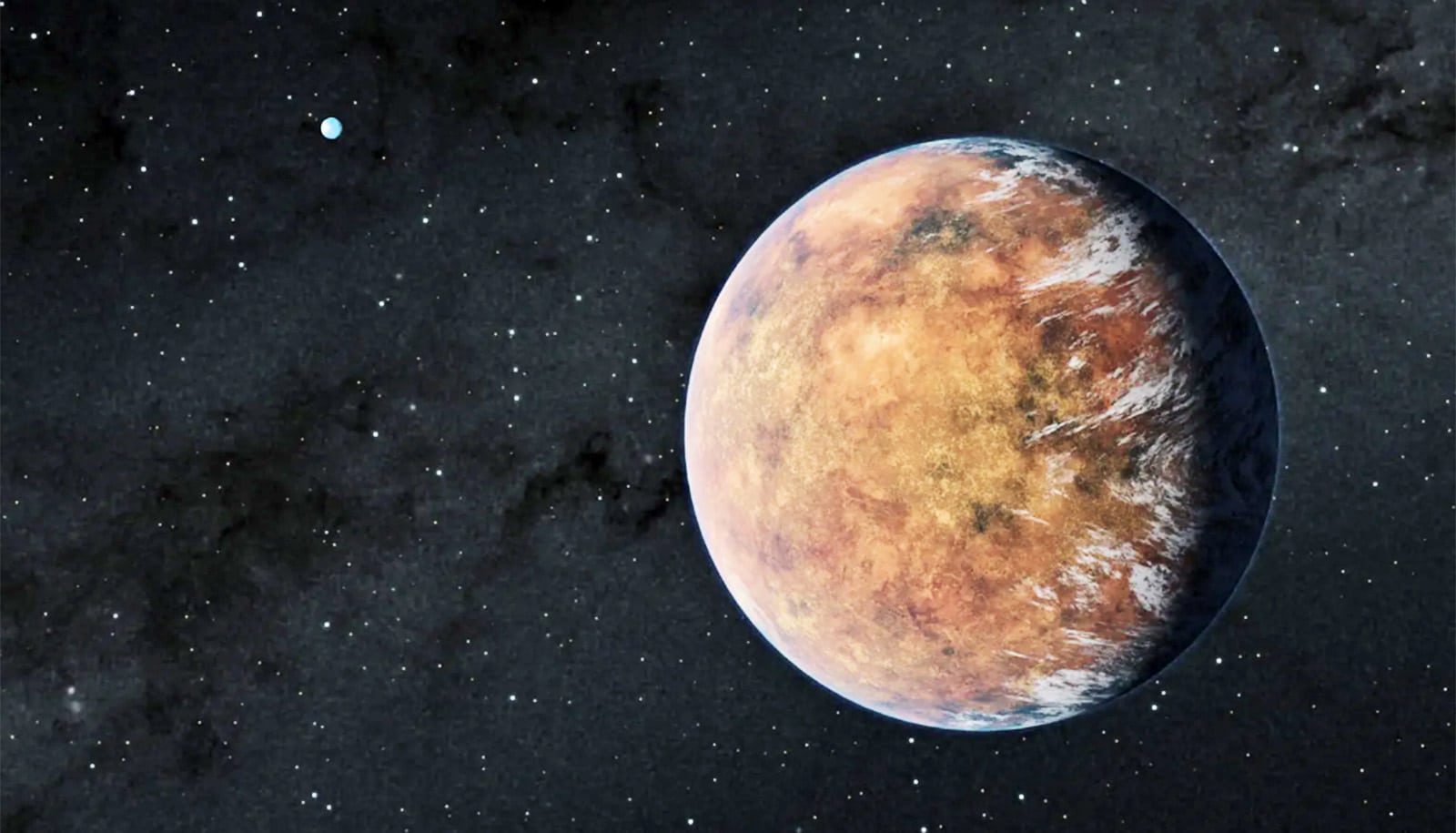Researchers have discovered an Earth-sized exoplanet—a planet outside of our solar system.
The planet, named TOI-700 e, falls within its star’s habitable zone, meaning it could be capable of supporting life as we know it.
Astronomers believe that many such planets exist in our galaxy and across the universe. The discovery of TOI-700 e, along with the earlier confirmation of its host system, could provide unique opportunities to better explore exoplanets going forward.
“Even with more than 5,000 exoplanets discovered to date, TOI-700 e is a key example that we have a lot more to learn,” says Joey Rodriguez, an assistant professor in the physics and astronomy department at Michigan State University, who helped make the discovery.
Rodriguez was one of the senior researchers on the project, led by Emily Gilbert, a postdoctoral fellow at NASA’s Jet Propulsion Laboratory in Southern California. The duo is also part of the original team that confirmed the TOI-700 system in 2020, finding it had at least three planets (named TOI-700 b, TOI-700 c, and TOI-700 d).
With the new discovery, the team showed that the TOI-700 system has two Earth-sized planets within its habitable zone.
“This is one of only a few systems with multiple, small, habitable-zone planets that we know of,” says Gilbert. “That makes the TOI-700 system an exciting prospect for additional follow-up.”
Gilbert, Rodriguez, and Andrew Vanderburg, an assistant professor of physics at Massachusetts Institute of Technology, spearheaded the current project, which includes researchers from dozens of institutions. The research team announced the finding at the American Astronomical Society meeting in Seattle.
Here, Rodriguez, an exoplanet expert, explains the discovery and the research behind it:
What makes this discovery special?
The discovery of TOI-700 e provides a valuable opportunity for detailed follow-up studies, as it is one of the only systems known with two small planets in the star’s habitable zone. The host star, TOI-700, is well-suited for these characterization efforts.
This system is very accessible in comparison to other candidates or TESS Objects of Interest, TOIs. Some of those other systems are farther away and their stars are fainter. TOI-700 is really close to us—about 100 light years away.
Having a close and bright host star allows us to achieve the sensitivity needed to measure key aspects like the mass of the planets and the composition of a planet’s atmosphere.
How does one go about discovering an exoplanet?
With TESS, we are observing more than 100 million stars across the night sky. When we look at one of those stars, we can also see if a planet moves between the star and the satellite, blocking out just a little bit of the star’s light. We use the analogy of a fly moving in front of a spotlight.
You were also part of the team that originally confirmed the TOI-700 system in 2020. Can you share a little bit of the background there?
In 2020, there was a series of three papers that came out at the same time that confirmed the TOI-700 system. Emily Gilbert, who led this current effort, led one of those studies. That one looked at the star, its three planets known at the time—b, c, and d—and the dynamics of the system.
I led another paper, which also used data from the Spitzer Space Telescope to confirm the system had a habitable-zone, Earth-sized planet. That was planet d.
At the time, we had some hints that there might be another planet, planet e, but on the outside of the system—like way, way outside. After we got in another year of observation with TESS, though, we discovered that planet e was actually inside the habitable zone, in between the orbits of planets b and c.
So TOI-700’s planets aren’t in alphabetical order?
No, and there’s a little bit of an Easter egg in our new paper where we say, “Sorry, they are not in order.” But this demonstrates the power of something like TESS and the reason to continue observing systems with already discovered exoplanets. It shows that we have a lot more to learn and there may be surprises as we keep observing.
Can you talk about the names: planet b, c, d, and e? Are those final or will you get to pick different ones?
I get this question all the time. People will ask if I can name an exoplanet “Joey-1 b” or if I could name one after my wife. I tell them I could call them that, but nobody else would.
There’s actually a convention and I don’t want to get too far in the weeds, but it is a combination of the discovery instrument or telescope and a catalog number. In the case of TOI-700, before they were confirmed, the candidate planets were designated TOI-700.01, TOI-700.02, and TOI-700.03. As we confirmed them, they became TOI-700 b, TOI-700 c, and so on. The “a” gets reserved for the star, even though we just call it TOI-700.
What’s next for you and your research?
I was asked this question in 2020 and at the time I said, “TESS will observe the system again and we’ll see what happens.” I can say the same thing again this time since TESS is going to re-observe TOI-700.
We can also use other instruments to study the system. For example, we’re working to use another telescope, the JWST, to characterize the biggest planet in the system along with a large effort to measure the mass of all four planets through spectroscopic measurements. But I also have my hands in a bunch of different projects for TESS. For example, I do a lot of work with Jupiter-sized exoplanets that are very close to their stars.
We are doing exoplanet studies with our on-campus observatory to help confirm new planets from TESS, not systems like TOI-700, but planets more similar in size to Saturn and Jupiter.
We started off talking about habitable zones. What will it take to go from saying an exoplanet like TOI-700 e is capable of supporting life to showing that it does?
That’s a question that’s going to be debated for decades. The reason is that one of the ways we think we’ll be able to do this is by identifying biological signatures in the planet’s atmosphere. Those are really hard measurements to make.
I expect over the next decade or so we may have the first detections of possible biological signatures in a planet’s atmosphere, but since many can also be explained by nonbiological sources, there will be a lot of debate.
So, we’ll need to measure multiple observables and decide which of them—or which combinations of them—are actually indicative of life. All of that will be complicated and, I think, will be hotly debated.
That being said, I would argue that, even if we do find something, we are trying to force our understanding of life into a box. What I mean by that is we have one data point for how we think about life and that’s Earth: It’s us and what we see around us. Who’s to say that’s what all life looks like?
Source: Matt Davenport for Michigan State University



